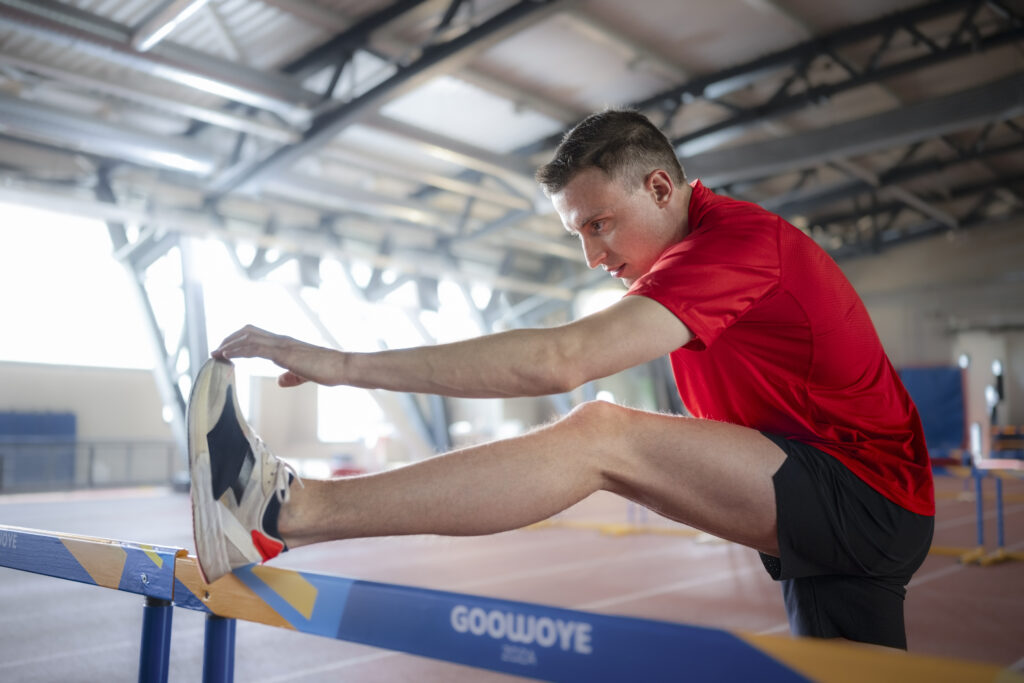Have you ever heard of the dreadful shin splints? (If not check out this article, Why do People get Shin Splints?) Have you just gotten over shin splints and want to take preventative measures to decrease the likelihood of getting them again? Either way, this article is for you! Keep in mind that I am not a medical professional, therefore I cannot offer any medical advice. Everything I write is based on my own experience and I use these methods myself.
The easiest way to avoid shin splints is to ease into training and stay off of hard surfaces, however, I know that is not possible most of the time, especially during track season. Still, you should ease into your training on hard surfaces. Start in the grass or turf, depending on your event, and slowly add more time on the track. Ideally you would do this during conditioning, that way when the official track season starts, you are accustomed to running on the track full time.
Stretching
It is very important that you are stretching correctly before you run. To keep the inflammation down in your calves and shins, you should be doing calf stretches before you run. If you are curious as to why the inflammation needs to be kept down, it is actually because shin splints are caused by inflammation in your calves and shins.
For the first stretch, find a wall and keep your heel on the ground while putting your toes on the wall. Lean into this and you should feel a stretch in your calf/achilles. Repeat this with the other side.
Downward Dog
The Downward Dog yoga pose is very helpful to stretch out your calves. Put your hands and feet on the floor like you’re going to do a push up and then raise your butt straight into the air. You should feel it stretch your calves, but if you don’t, lean back and put more pressure on your feet.
Get in the Downward Dog pose like I mentioned in the previous paragraph, but instead of having both feet on the floor, I want you to cross one foot over the other at the ankle. You should feel a stretch in this position, too. Switch legs when you are done.
These stretches should all be held for 10 seconds to make sure the stretch is beneficial. These are the main stretches I do to stretch out my calves.
Leg Swings
After these stretches, I always finish by doing leg swings. Stand next to something that you can grab for support (at the start line my teammates and I used each other) start by facing it and swing your leg across your body, horizontally. Do this with both legs. Next, turn 90 degrees so you are perpendicular to the thing you are holding. Swing your leg forward and backward and then switch. These should be done for at least 10 seconds. Leg swings not only loosen your legs up to get ready to run, but also stretch out your legs.
Rolling
Rolling is another method I use to prevent shin splints. You can either use a hand roller or a foam roller. Put your legs on the foam roller, then cross your legs at the ankle, putting all of your pressure on your leg that is on the foam roller. Raise your butt off of the ground and use your hands to roll you back and forth over the roller to maximize pressure and effectiveness. Do this until you feel your calves are fully rolled out and there aren’t any knots.
Shoes
Wearing the right pair of shoes is very important to preventing injuries while running and will help prevent shin splints. You should get shoes that match your pronation, such as neutral, overpronation, or underpronation. If you overpronate, you are more susceptible to shin splints. Make sure you are changing your shoes after they reach the recommended mileage for that particular shoe.
It is impossible to say that if you follow all of these steps, you won’t get shin splints. The hard reality of running is that you will inevitably get shin splints at some point. If you stumble across this article and wonder how to treat shin splints, check out my other article How to Treat Shin Splints. I followed these steps and did not get shin splints during cross country, however, I did during track. While I still got them during track, it was a lot later into the season than my first year and training was a lot harder my senior year than sophomore year.

